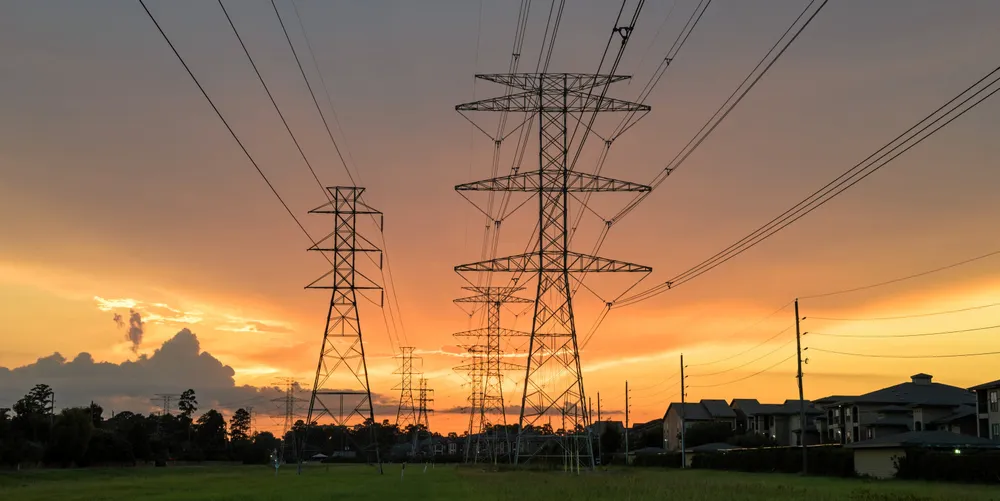US spends $1.3bn on key power line capacity to anchor massive green network build
Federal agency also released a national transmission study spotlighting infrastructure needed to unlock renewables in key regions

The US Department of Energy (DoE) announced $1.3bn in funding to directly contract capacity in three major power lines in the Southwest, Mountain, and Northeast regions to enable flow of power between renewable resources and load centres.
“This historic effort to strengthen the nation’s transmission will drive down costs for American families and deliver thousands of good paying jobs for American workers – helping communities keep the lights on in the face of climate change-induced extreme weather events,” she added.
While transmission upgrades are needed throughout the nation, the study found congestion and curtailment particularly acute in the Northwest, Mountain region, Texas, and New York.
California and the Southwest likewise face reliability risks, and interregional transmission is needed to reduce congestion and move renewable power from resource-rich regions to load centres as clean energy capacity ramps.
The three projects are being funded under DoE’s Transmission Facilitation Programme (TFP) enabled by the Infrastructure Investment and Jobs Act of 2021.
The $2.5bn TFP authorises DoE to purchase a percentage of the total proposed capacity of eligible transmission lines to increase “the confidence of additional investors, encourages additional customers to purchase transmission line capacity, and reduces the overall risk for project developers,” the department said.
Expanding transmission capacity is a critical component to achieve President Joe Biden’s ambitious goal of a carbon-free grid by 2035, as much of the country’s best renewable energy resource is either untapped or unable to get to market because of capacity constraints.
“The expansion and modernization of our national power grid is central to meeting our urgent climate and energy security goals,” said American Council on Renewable Energy (Acore) CEO Greg Wetstone.
The announcement follows last week's DoE granting another $3.5bn to fund 58 projects across 44 states to help protect the aging US electric grid from extreme weather and facilitate inter-regional collaboration to expand capacity for solar and wind energy.
Bank of America estimates the US will need to spend $360bn on transmission through this decade to meet Biden’s clean energy goals, noting “aging grid infrastructure is a bottleneck for electricity demand growth that underpins a near doubling in [transmission and distribution] capital expenditure by 2030.”
The three selected projects include:
- Cross-Tie 500kV Transmission Line Project crossing the Mountain states of Nevada and Utah. The Cross-Tie is a proposed 214-mile (344-km), 1,500MW bi-directional transmission line connecting existing systems in Utah and Nevada to increase capacity, improve reliability and resilience, relieve congestion in the Mountain region that will need some 2,300 GW-miles of new transmission over the next decades. DoE estimates Cross-Tie will contribute 14% of regional need and increase access to renewable energy resources in the region, with construction expected to start in early 2025.
- Southline Transmission Project connecting the Southwest states of Arizona and New Mexico. The 175-mile, 748MW line will help unlock renewable energy development in southern New Mexico and deliver clean energy to growing markets in Arizona that currently rely on fossil fuel generation. The first phase of a longer line, it will partially avoid permitting bottlenecks by following existing rights-of-way and upgrading aging transmission facilities. Southline will provide 14% of the Southwest’s estimated 935GW-miles of new transmission needed by 2030, with construction expected to begin in early 2025.
- Twin States Clean Energy Link crossing the New England states of New Hampshire and Vermont. The 1,200MW Twin States is a proposed high-voltage direct current (HVDC) bidirectional line that will expand New England's grid by providing access to Quebec, Canada’s massive hydroelectric resources. It will also allow New England's burgeoning offshore wind sector to export power to Canada. This single line will supply nearly 80% of the 1.5GW of new transmission capacity needed in the Northeast, with construction expected at the end of 2026.